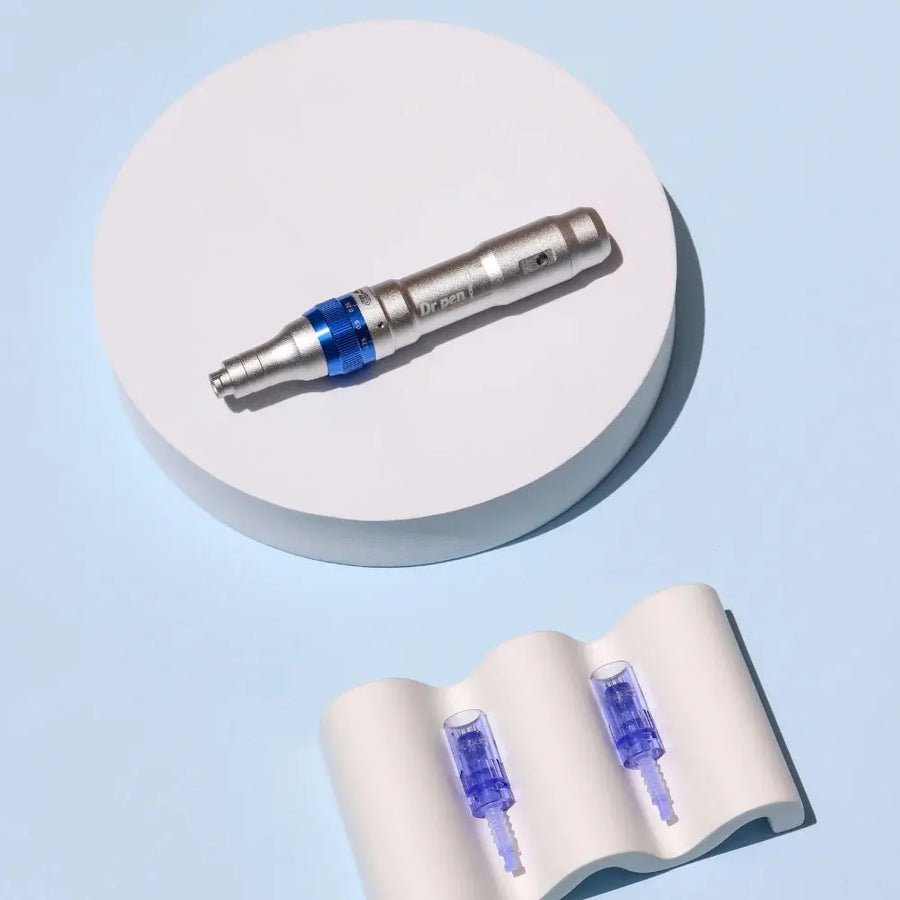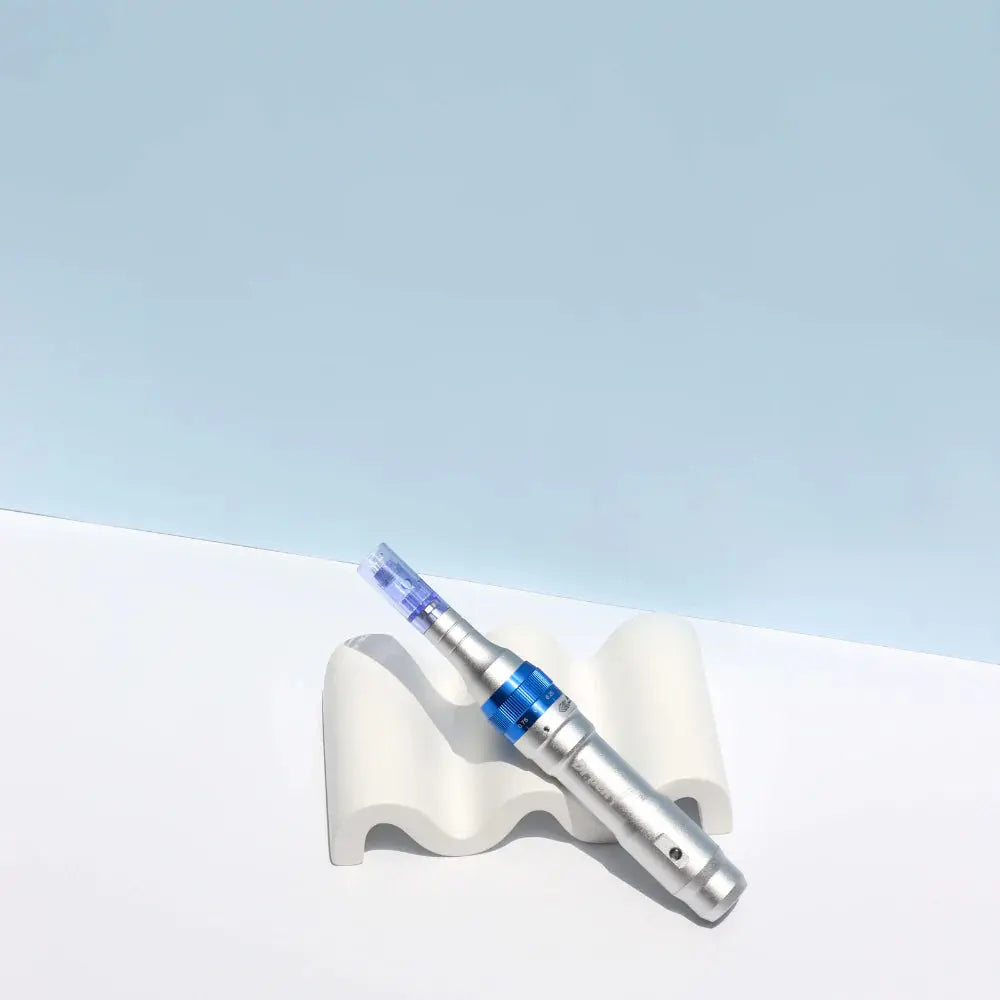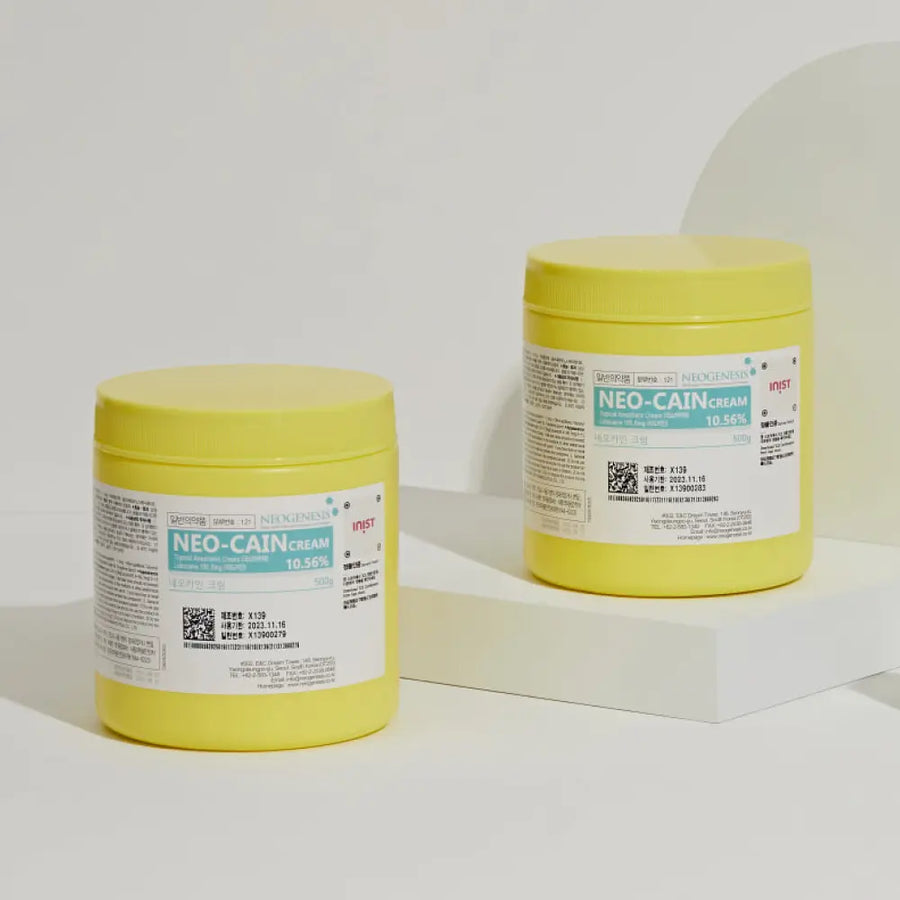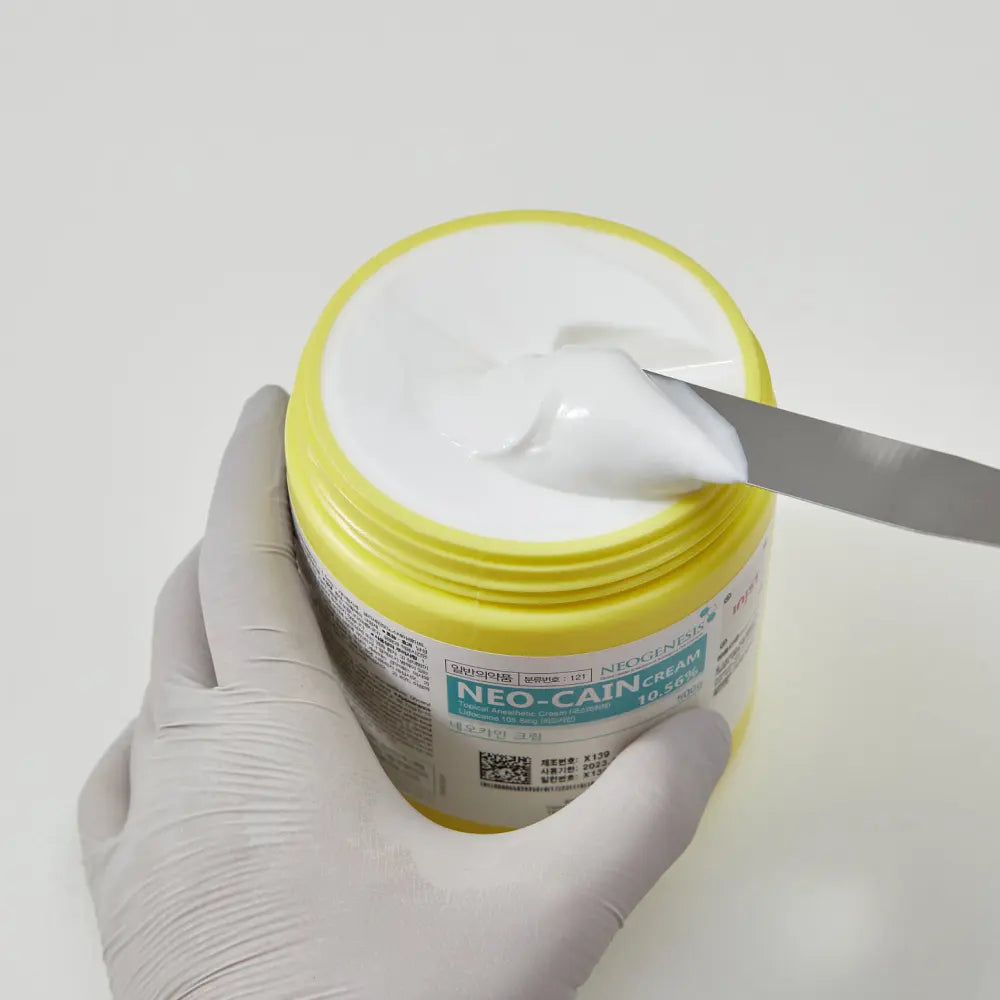How to Start Your Permanent Makeup Journey: Beginner's Guide to Success
Dreaming of starting a successful career in permanent makeup but feeling overwhelmed about where to begin? The permanent makeup industry can offer aspiring artists incredible opportunities. The breath of the procedures which can take up 1-3 years must be coupled with the adequate expertise of certain techniques that comprise microblading, lip blushing, and nano-blading. As with other careers, starting your permanent makeup journey involves more than just being an artist. One must master essential techniques and safety protocols and understand communication processes with clients and equipment selection. Still, we'll guide you through this study!!
In this ultimate guide, we'll give you everything you need to know about establishing your permanent makeup career successfully. Be it in training, industry standards, or practical tips for starters; we will help direct you to become an expert in permanent makeup artistry.
Key Takeaways:
- Permanent makeup procedures require specialized skills in techniques like microblading, lip blushing, and nano-blading, and the results last 1-3 years.
- Success in this field demands more than artistic talent - proper training, safety protocols, and client communication skills are essential components.
- Understanding different permanent makeup services, from eyebrow-tattooing techniques to lash line enhancement and scar camouflage, is crucial for building a diverse skill set.
- Proper aftercare instructions and knowledge of potential risks are vital for ensuring client satisfaction and maintaining professional standards.
- Equipment selection, including specialized tattoo machines and single-use tools, plays a significant role in delivering quality results.
Understanding Permanent Makeup
Permanent makeup, also known as cosmetic tattooing or micro-pigmentation, has evolved in the cosmetics business. During this state-of-the-art approach, organic pigments are entered into the dermal layer of the skin, producing long-lasting makeup effects.
Evolution of Permanent Makeup: The sector has drastically changed since its simple laser cutting. The modern permanent makeup is combined with intelligence, skill, technical arts, and phenomenal depth. In contrast to earlier procedures, utilizing manufacturing precision and pigments, the new ones mainly follow the digital path.
Core Applications: Permanent makeup is used for beauty and medical purposes. The most common applications include: brow grooming (microblading or powder brows), permanent eyeliner (tattooed), and lip blushing or tints. There are also some medical applications such as scar camouflage and areola restoration after breast surgery.
Duration and Maintenance: A permanent Makeup procedure typically lasts 1-3 years depending on the type of your skin, the texture of the tattoo, and the level of cleansing. These factors, along with healthy sun exposure & the use of caretaking skin, help determine how long the results remain unchanged. Besides regular smoothing sessions, through regular maintenance and beauty update sessions the desired shape should be kept.
Professional Expertise: The success of permanent makeup operations-basically depends on the skills of the practitioner. The qualified technicians have to go through a thorough training program that includes color theory, facial morphology, and proper safety protocols. They need to understand the skin types, the way pigments behave, and how the healing process occurs to provide the best outcome possible.
Essential Tools and Equipment
Getting the right tools and equipment is the prerequisite for establishing a permanent makeup career. Quality instruments not only ensure accurate application but also provide the highest safety standards for clients.
Professional Microblading Tools: Microblading on a high-quality pen or handle is crucial in creating super-precise hair-like strokes. Choose tools made from medical-grade stainless steel to ensure durability and sterilization capabilities. Invest in various blade configurations to accommodate different techniques and client needs.
Digital PMU Machine: The use of a dependable digital permanent makeup machine is a must for such procedures as powder brow application, eyeliner application, and lip blushing. Find machines that have adjustable speed settings and compatibility with different needle configurations. Latest equipment sometimes comes with digital displays thus allowing one to control the depth and speed of the needle precisely.
Safety and Sanitation Equipment: Proper safety equipment includes disposable gloves, face masks, and protective eyewear. Keep a supply of sterilized needles, single-use tools, and medical-grade cleaning solutions. An autoclave sterilizer is mandated to remove germs from all reusable tools between clients.
Pigments and Color Theory Tools: Go for high-quality items from professional producers. The color wheel and mixing plates will enable you to explore and practice color theory and also create customized colors. It is at all times best to have a variety of skin-tone-appropriate colors available for different procedures.

Popular PMU Procedures
Microblading for Eyebrows
The microblading technique has become one of the most popular permanent makeups ever made by DMN Beauty International. This is a process in which ultra-fine needles are used to create hairs in the area of the eyebrows, giving them a natural look, a well-defined shape, and durability of 1 to 3 years with appropriate maintenance.
The procedure usually takes 2-3 hours, during which time the artist first draws the ideal brow shape and pigment is then applied using precise, calculated strokes. This attention to detail guarantees symmetry and personalization according to each client's facial features.
Lip Blushing
This procedure is done by a professional and is one of the most subtle ways to enhance the lips. This technique uses natural pigments to be deposited into the lips, creating a soft, natural, blended effect that enhances the lip color and even restores symmetry.
The results usually last about 2-5 years depending on the type of skin and the lifestyle of each person. The treatment is typically completed in 1-2 sessions which are dedicated to careful color selection that is complementary to the client's natural lip tone as well as the desired end result.
Permanent Eyeliner
Permanent eyeliner is a great solution for people who are looking for a long-lasting eye definition. This technique implants pigment along the eyelash line creating a more or less dramatic look.
The results can last between 3-5 years after which a touch-up is required. Artists can make the thickness and style of the liner from a natural lash enhancement to a more pointed wing depending on the choice of the client.
Powder Brows
Powder brows differ from microblading in that they present a softer, more densely filled appearance. Utilizing a machine, the coloring is done using tiny rocket dots, forming a powdery look that simulates the impression of professionals applying eyebrow powder.
It can last for 2-3 years. This method is ideal for people who have oily skin, as the dusty powder stays longer than the classic microblading procedure.
Client Consultation Process
The client consultation process is a critical first step in any permanent makeup procedure. It lays the groundwork for successful results and clients happy. Such a thorough consultation allows practitioners to grasp what their clients expect while they assess whether a client is suitable for the treatment and what potential contraindications exist.
Understanding Client Goals
Initiate an in-depth discussion concerning what the client hopes to achieve. Make sure to listen to all their wishes and concerns carefully and take detailed notes about their preferred shapes, colors, and overall aesthetic preferences. This information will be invaluable during the actual procedure.
Medical History Assessment
Next, perform a thorough medical history review of the client. This means checking for:
- Allergies and skin sensitivities
- Current medications
- Previous permanent makeup procedures
- Existing medical conditions
- Recent surgeries or treatments
Skin Analysis and Patch Testing
Analyze the skin carefully to assess:
- Skin type and condition
- Natural undertones
- Healing ability
- The possibility of a reaction to pigments
A patch test is necessary to make sure the client won't have undesirable reactions to the pigments or numbing agents used during the procedure.
Setting Realistic Expectations
It is essential to communicate what outcomes are realistically possible depending on:
- Client's skin type
- Natural features
- Healing capabilities
- Maintenance requirements
Show before and after photos of similar cases to help clients visualize potential outcomes. Additionally, explain the process of healing, the expected duration of results, and necessary touch-up appointments.
Documentation and Consent
Complete all necessary paperwork, including:
- Detailed consultation forms
- Medical history documentation
- Informed consent forms
- Photo release agreements
- Pre and post-care instructions

Treatment Process and Pain Management
The permanent makeup treatment process is initiated with a comprehensive consulting session centered on the client’s desires, after which the artist prepares an individual treatment plan. Your facial features and skin type will be examined by the artist who will use the information collected to choose the best treatment strategy for you.
Preparation Phase
The first thing your artist does is apply a topical numbing cream to help reduce discomfort. You can expect that the numbing cream takes around 20-30 minutes to work so the client maintains the level of comfort throughout the treatment. The artist can sketch the design and discuss the pigment colors during this time.
During the Procedure
The artist implements the treatment by using specialized tools to introduce the pigments into the dermal layer of your skin. The sensation felt is often described in the form of a slight scratching feeling rather than intolerable pain. Most clients said that the degree of discomfort they felt was 3-4 out of a possible 10, all owing to the effects of the cream.
Pain Management Techniques
Several applications of topical anesthetic during the procedure:
- The use of time-intensive intermissions guarantees you a good level of comfort.
- Softly wiping the area to avoid aggravating the skin.
- Setting the temperature to a comfortable level in order to help with sensitivity issues.
Post-Treatment Care
A few hours after the procedure you might observe some soft swelling and tenderness for a day or two. After the procedure, the artist will give you precise aftercare instructions along with suggestions for over-the-counter pain medications in case you need them. You can use cold compresses to ease any anguish and swelling.
Aftercare and Healing
The healing process after permanent makeup is essential for achieving optimal results. Diligently following proper aftercare instructions ensures that your investment yields the desired outcome while minimizing potential problems.
Initial Healing Phase
In the first 24-48 hours, expect some redness, swelling, and mild discomfort around the treated area. Using a thin layer of the recommended healing ointment, avoid touching hum, the treated area with unwashed hands. Keep the area clean and dry since direct water contact will be avoided.
Week-by-Week Recovery
The first fortnight is important for proper healing. The color will appear darker initially before fading to its true shade. Scabbing is normal and should flake off naturally. Never pick at them. Most superficial healing will be done and by week two, the skin heals internally then.
Essential Aftercare Tips
- For two weeks, avoid swimming pools, saunas, and excessive sweating
- Shield the area treated from the sun
- Do not apply makeup until the area is fully healed
- Use only products that have been recommended for aftercare
- To reduce swelling, sleep with your head higher than the body level
Long-term Maintenance
Keep your permanent makeup safe with the proper application of sunscreen and the avoidance of harsh skincare products at the treated site. To keep the desired lookout, schedule touch-up appointments according to the frequencies suggested by your artist.
Signs of Complications
Watch out for strange symptoms such as too much swelling, very intense pain, or indicators of an infection. If you detect anything that concerns you while healing, please let your permanent makeup artist or health care practitioner know instantaneously.
Conclusion
Starting your journey in permanent makeup is a thrilling stage in a fulfilling career in the beauty industry. You are well-equipped to start your path to becoming a successful PMU artist by following this extensive guide. Keep in mind that success in permanent makeup lies in the blend of artistic talent, technical proficiency, and continuous education. Each element of your journey contributes to providing excellent permanent makeup services, from mastering essential techniques to appropriately understanding aftercare instructions.
Safety and knowledge of the latest industry trends are the two critical factors that can distinguish you in the rapidly growing area of interest you want to attend, whether it is microblading, lip blushing, or any other specialized procedure. Enroll today in a certified program, build your portfolio, and reach out to artisans who have the experience. Your strong commitment to learning and mastery will lead you to create natural-looking results that will significantly enhance your clients’ beauty. The realm of permanent makeup is waiting for your unique touch!
For more insights and professional products, visit Skinae.pk.
FAQs
What is the average healing time for permanent makeup procedures?
The healing time varies by procedure but generally takes 7-14 days. Eyebrows heal typically within a week, while lips and eyeliner may take up to two weeks. Following proper aftercare instructions is vital for optimal healing and long-lasting outcomes.
How much does permanent makeup training cost?
The costs of training programs range from Rs 35,000 to Rs 60,000 in general for complete programs. This comprises basic as well as advanced techniques, safety protocols, and practical sessions. Some programs provide a payment plan, while the starter kits are included in their pricing.
Can I get permanent makeup if I have sensitive skin?
Yes, but a patch test is needed before the procedure. Qualified artists will analyze your skin type and medical history to ensure safety. Those with hypersensitive skin might take additional measures and talk about it with their technician.
How often do I need touch-ups for permanent makeup?
Most permanent makeup procedures need to be touched up every 1-3 years, depending on the type of skin, the lifestyle, and the sun exposure. Regular touch-ups help to preserve the desired result and natural-looking enhancement of your features.
Is permanent makeup removal possible if I'm not satisfied?
Yes, the permanent makeup can be undone through either of the two methods- laser treatment or saline removal. However, it is essential to pick the expert with a good reputation at first so that the removal process can be avoided. Some pigments can be erased faster and easier than others through the removal procedures.
What's the difference between permanent makeup and traditional body tattoos?
Unlike body tattoos, permanent makeup uses specialized cosmetic ink and techniques specifically designed for facial application. For example, unlike tattoos, PMU is typically a more subtle method, which requires different techniques and pigments for a natural-looking finish because it is usually at a more superficial skin depth.






Leave a comment